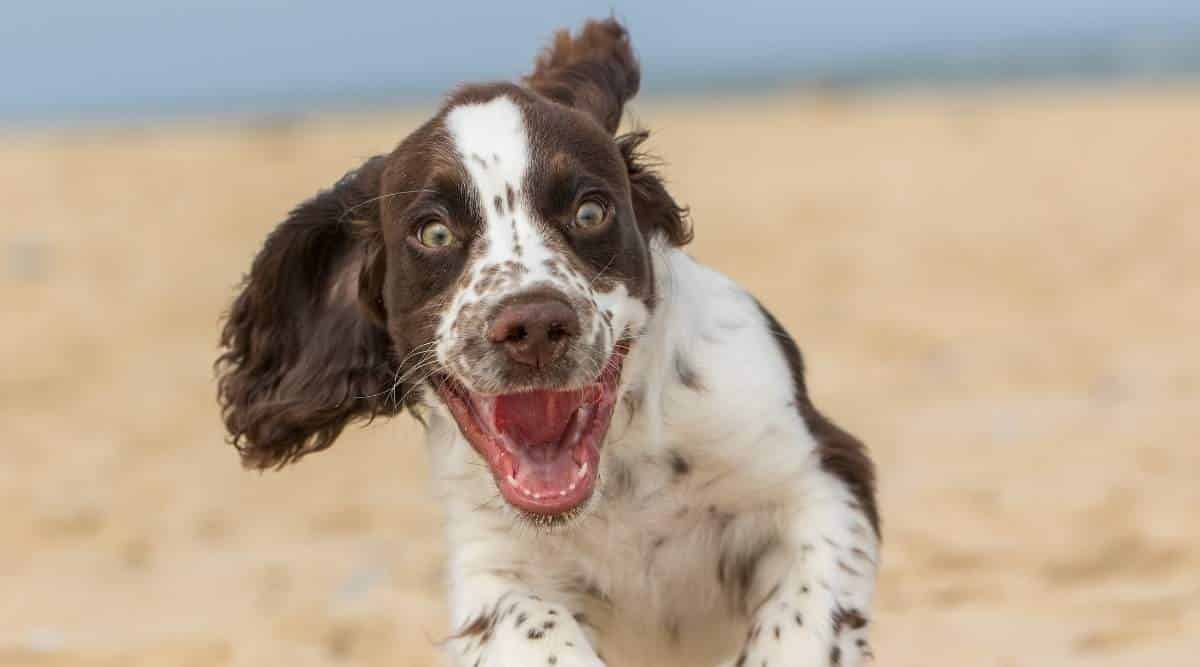Standard Schnauzer Breed Information: Facts, Traits, Pictures & More
When you purchase through links on our site, we may earn a commission. Here’s how it works.
There are three sizes of Schnauzer – miniature, standard, and giant. And here we look at the middle Schnauzer sibling. Although they are the same breed, subtle differences might make one size more suitable for you and your family. They might be medium-sized canines, but they have the feist of a lion and make the best watchdogs. They are territorial, protective, and very vocal.
The Standard Schnauzer is the original German farm dog, and they still retain all the instincts of one. This means you cannot trust them around smaller animals. So, it would be best to have a secure garden and a furry-free home. They are very sociable and are active most of the day. They’re also super stubborn, so they need an experienced owner.
If you like the sound of a Schnauzer and think you can tick all these boxes, you and your family are in for a treat. Many Standard Schnauzer owners say that they’d never have another breed. So, let’s take a closer look at what you can expect from them.
Table of Contents
History
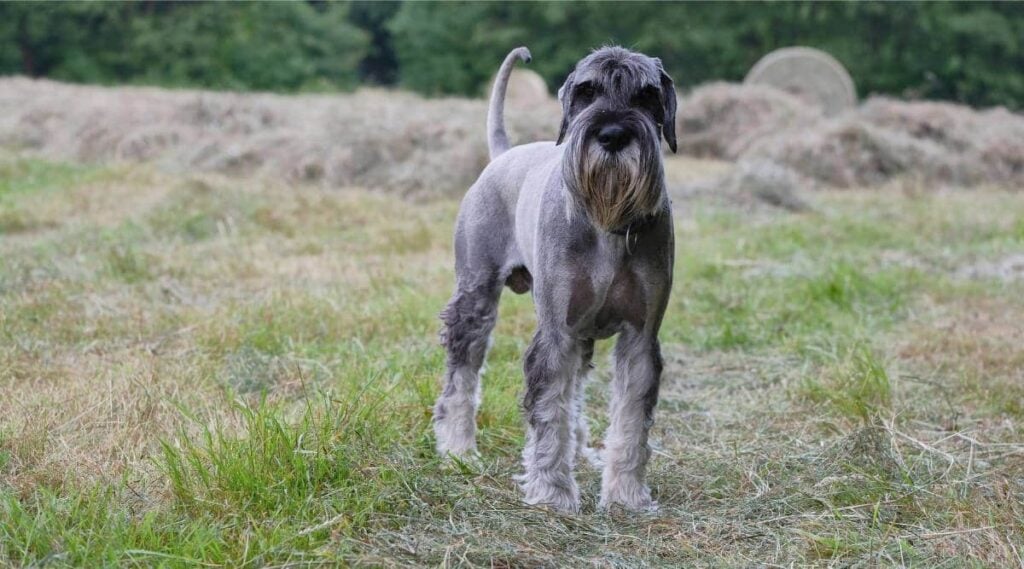
Bavarian farmers in the middle ages sought an all-around farm dog capable of ratting, hunting, herding, and guarding. We know that similar-looking dogs existed in the 1500s as they featured in many renaissance paintings, including those by Rembrandt and Lucas Cranach, the Elder.
Although the Standard Schnauzer looks like British terrier breeds, they are from continental herding and working stock. In the 1800s, fanciers wished to standardize the breed. It is thought that the gray Wolfspitz and the black Poodle played a large part in creating the breed we love today. This mix caused the salt and pepper coat and wiry texture they are famed for.
Originally they were known as “Wire-haired Pinschers.” They were first shown at Hanover’s Third German International Show in 1879. Ironically, the champion canine was a dog named Schnauzer. The following year, the breed standard was written. And just ten years later, in another German dog show, there were nearly 100 entries, showing how popular they had become.
But in the early 20th century, they became known as the Schnauzer, which translates to “whiskered snout.” It took a few years for American dog lovers to fall in love with the breed, but they soon clicked. The Schnauzer Club of America was created in 1925. And it was in 1933 that Schnauzers were categorized into three sizes, and the club split to recognize this.
Temperament
Standard Schnauzers are alert and stern watchdogs who take this role seriously, which is excellent if you seek a medium-sized family guardian. This breed is not a great fit for you if you are after a calm puppy. They are vocal and aloof with strangers, protective of their loved ones, so nothing gets past them and their loud bark. Thankfully, once their master welcomes someone into the home, they are welcoming dogs.
With their family, Schnauzers are highly sociable and need to feel like an integral part of the pack. Schnauzers also bond well with children, as they feel protective of them, which makes them a top choice as a family pet. But they crave attention and hate being left alone for any time. Separation anxiety is a battle with the Schnauzer, so you must be able to spend most of your time with them.
In return, they give you absolute loyalty. And because they are highly athletic and active, they are fun too. Kids love to play with them, adults enjoy their company, and they make great exercise partners. There is nothing the Standard Schnauzer cannot do.
Schnauzers have a crazy high prey drive, as hunting and ratting are their original purpose. They will become the local furries’ number one enemy. This means they cannot live with other animals, so multi-pet households are not a good fit. But with proper socialization, they can live with other dogs.
Size & Appearance
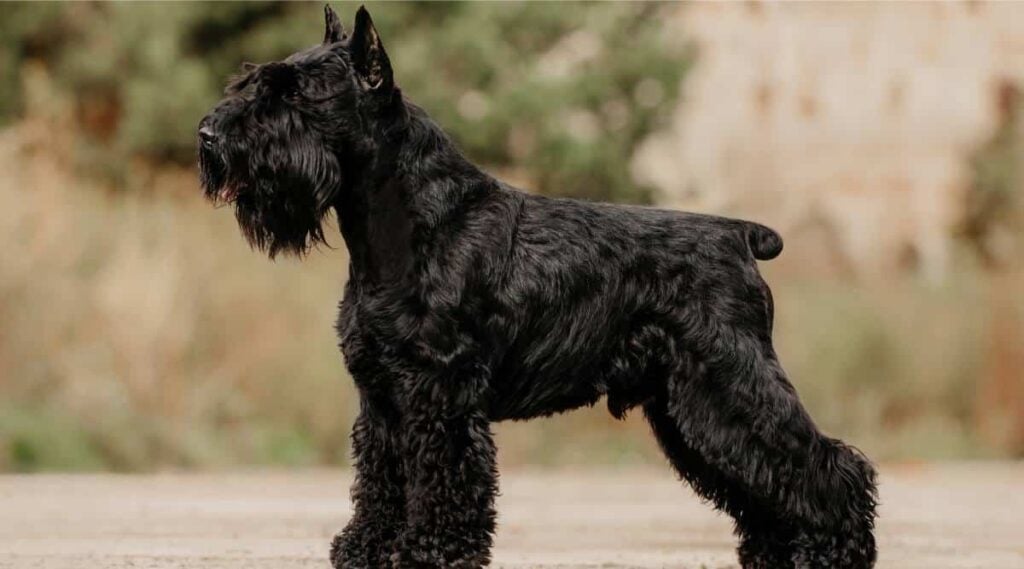
Standard Schnauzers are medium-sized dogs that weigh between 30 and 50 pounds and measure between 17.5 and 19.5 inches tall. Females are usually smaller than males and look softer around the edges too. Overall they are robust, sturdily built dogs with a proportionate but square frame.
They must conform to the Standard Schnauzer breed standard if you want to show your pup in the ring. The standard is quite strict regarding heights. However, if you’re Schnauzer is a family doggo, this guidance doesn’t matter all that much.
Coat & Colors
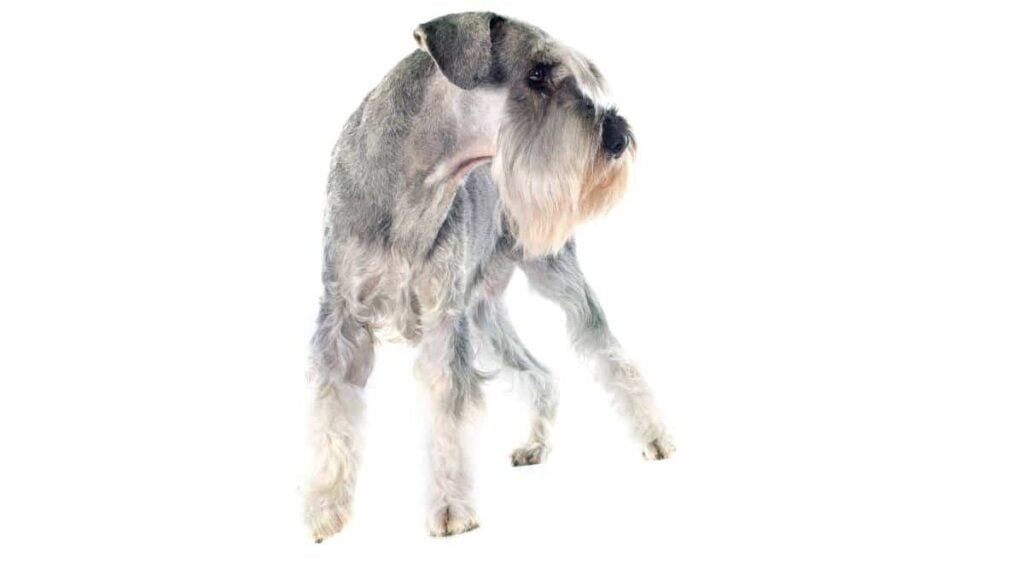
The outer coat is dense, hard, wiry, and thick, and the undercoat is soft and lies close to the body. The undercoat hardly sheds, producing fewer allergens, which is why they are a hypoallergenic breed. This makes them a top pick for families with slight dog allergies, but no dog is 100% hypoallergenic.
There are only two true Standard Schnauzer colors: pure black and pepper and salt. Pepper and salt combine white and black hairs, and pure black is just that. Again, if you want to show your dog in the conformation ring, there are strict rules on coloration.
Exercise & Living Conditions
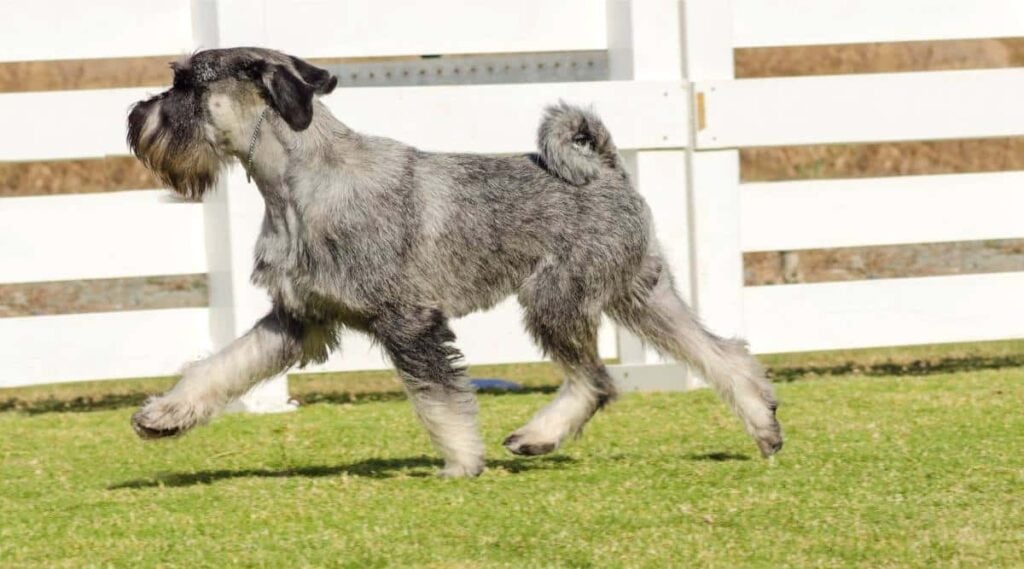
The Standard Schnauzer is in the working breed group, and that’s because they are traditionally working dogs. And if you don’t give them an outlet, they get into lots of mischief. They need at least 60 minutes of varied exercise daily.
Schnauzers also love to play throughout the day with their family and other doggos. Schnauzers thrive at all kinds of sports, such as agility, herding, and barn hunting, and they love a good game of fetch. Remember, Schnauzers are intelligent, and if you can’t keep up or bore them, they’ll crack on with their own games. Provide them with plenty of challenging toys to stimulate their brain and exciting toys that squeak to satisfy their prey drive.
The Standard Schnauzer is adaptable just as long as you meet their needs. They need an active family that can spend most of their time with them, mental stimulation, and a strong-willed owner who can bring out their best side. They shouldn’t live with small furries, but they can live with other dogs. If you can tick these boxes, the size of their home is not essential.
Training
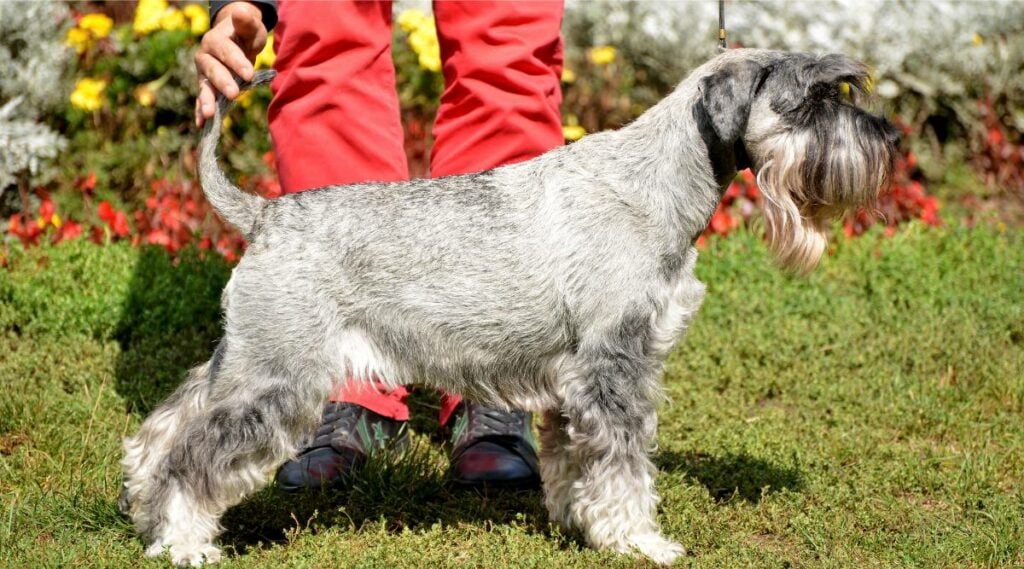
The Standard Schnauzer is as stubborn as they come, which means they need an equally strong-willed master to ensure they become well-mannered dogs. But, if you have experience and are up to the challenge, they train well and become obedient companions. Your training style needs to be firm but gentle, and training sessions must be short and fun to keep them motivated.
Socialization is crucial in training, especially for naturally protective and territorial dogs like this pup. Expose them to as many different dogs, people, sounds, sights, and experiences when they’re young so that you build their confidence. Make every interaction as positive as you can.
Crate training is recommended for the Schnauzer because of their separation anxiety issues. Providing a sensitive pup with a safe space to escape to, or to contain for a few hours, is beneficial for everyone. Pick a crate that aims to soothe sensitive dogs, and everyone’s a winner.
Health
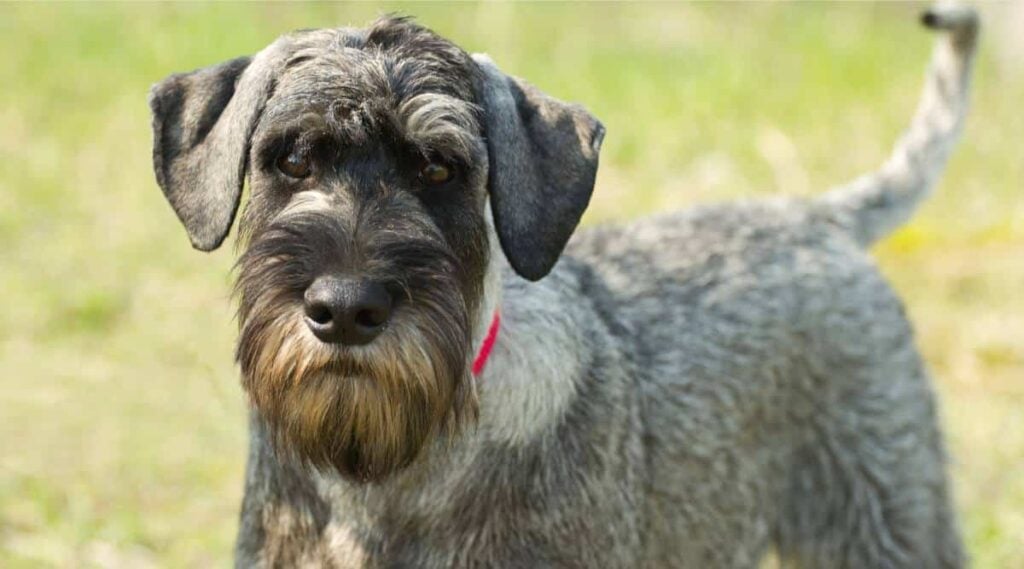
The Standard Schnauzer is a healthy dog breed who typically lives between 13 and 16 years. Overall the Standard Schnauzer is usually the healthiest of all Schnauzer breeds.
Dilated Cardiomyopathy
Dilated Cardiomyopathy (DCM) is where the heart chambers are thinner than usual, resulting in a weaker heart that cannot pump effectively. If undiagnosed, it can be fatal. Although it is not curable, you can manage it with medication. Symptoms include coughing, appetite loss, swollen abdomen, and fatigue.
Eye Conditions
Like many other pure breeds, the Schnauzer is prone to some eye conditions. Cataracts and progressive retinal atrophy are the most common eye conditions to watch out for. If your pup is bumping into things or becoming nervous in low visibility, there could be a problem with their eyesight.
Hip Dysplasia
Hip dysplasia is one of the most common conditions found in dogs. Research shows it is hereditary, so all breeding dogs must be screened for good hips. It occurs when the hips do not form correctly, and over time causes pain, mobility issues, and arthritis. Symptoms include lameness, kicking out, limping, and struggling to climb or descend.
Nutrition
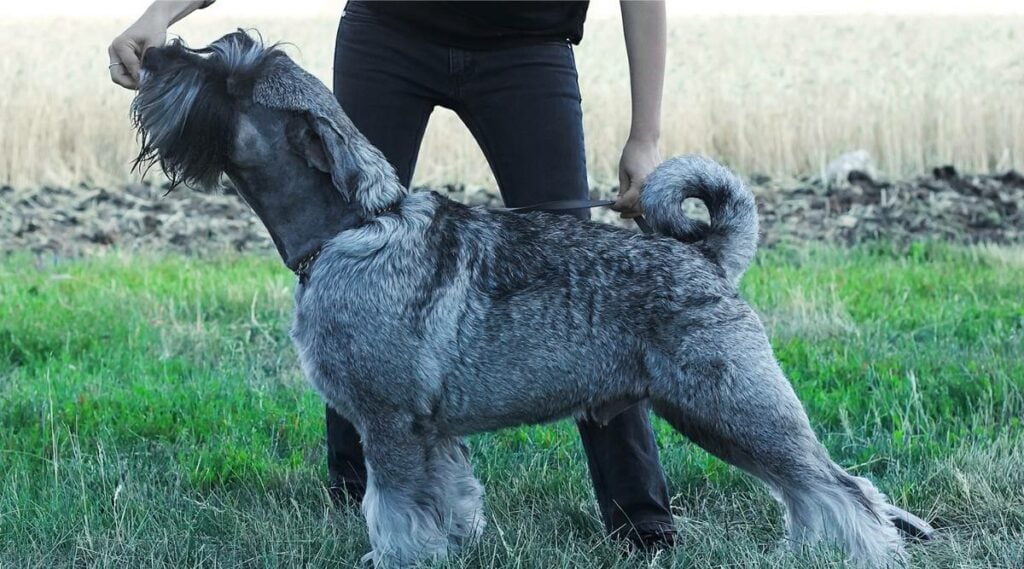
Ensure that it is an age-appropriate diet. This is important during the developmental stage because puppy food helps to control skeletal growth rate, which minimizes the chances of hip dysplasia. Food should also meet the standards the Association of American Feed Control Officials (AAFCO) set.
How much you feed depends on various factors, including age, weight, activity levels, and diet type. Whatever type of diet you pick, be sure to follow the feeding instructions to avoid under or over-feeding your Schnauzer. Your stubborn Schnauzer is bound to let you know when you’re not feeding them enough!
Grooming
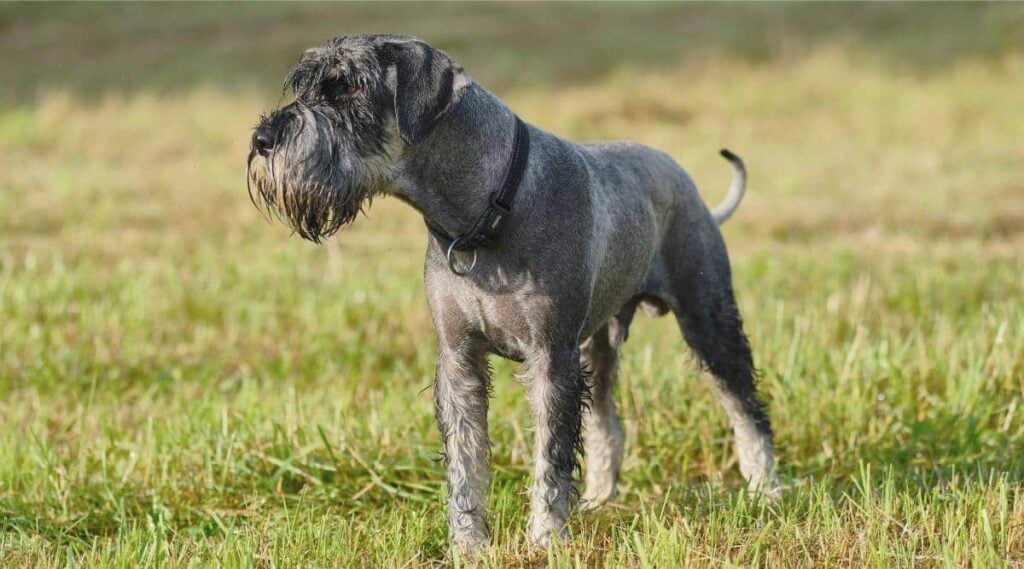
Schnauzer coats are traditionally hand-stripped rather than clipped. Clipping affects the texture of the coat, making it much softer. Clipping is fine if you do not intend to show your dog in the ring, and it’s much quicker and easier. But the breed standard is strict on the length of their coat and how owners should trim it. Usually, owners hire a professional groomer every five to eight weeks for a hand strip.
Opting for a traditional Schnauzer hairstyle means you must style their famed mustache and eyebrows, which takes time and practice. But because they shed much less, brushing them takes less time than other dogs. Bathe them once every few months with a doggy shampoo. Owners should complete dental cleaning weekly.
Breeders & Puppy Costs
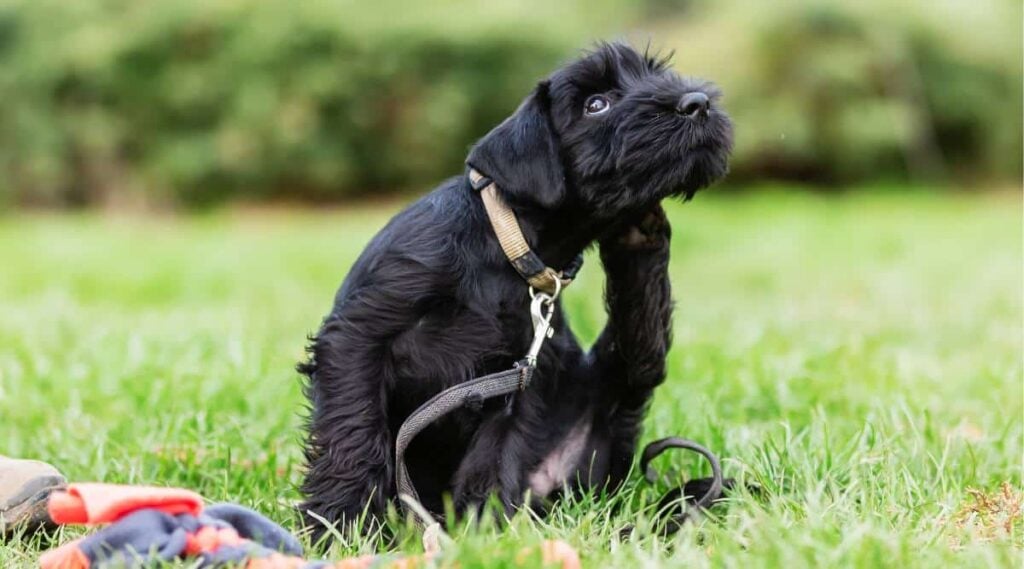
Research breeders online and look for independent reviews and their experiences. Contact and set up a meeting if you find one you want to work with. Good quality breeders want to meet potential owners to ensure they are a good fit for their pups. A great place to start your research is with the AKC’s Schnauzer breeder page.
A Standard Schnauzer puppy’s average price is between $1,000 and $2,000. But expect to pay much more if you are searching for a puppy from an award-winning lineage. You must also remember to budget for everything puppies need, such as beds, crates, clothes, toys, training, health care, etc. And many of these things are ongoing costs throughout their lifetime.
Rescues & Shelters
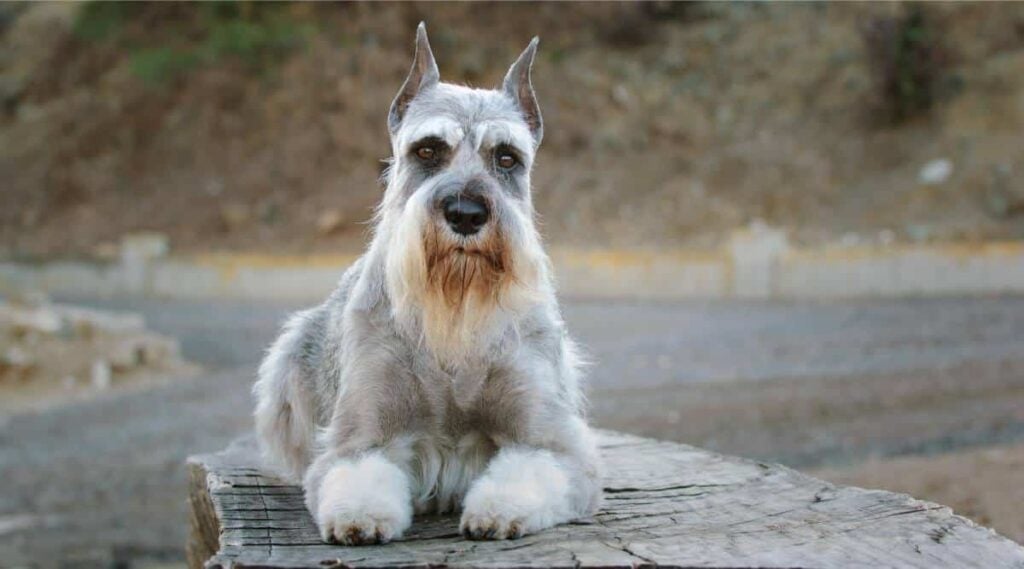
Many dogs are waiting for their forever home in your local rescue centers, including Standard Schnauzers, and one of these could be your next family pooch. When you visit, speak to the staff about wanting a Schnauzer, and they might be able to point you in the direction of a nearby shelter with one. Alternatively, online rescue organizations list Schnauzers waiting for adoption state by state.
As A Family Pet
- Standard Schnauzers are energetic and have lots of fun.
- They make great family pets for active families.
- These dogs have a soft spot for children.
- Schnauzers are territorial and protective.
- They are very healthy dogs.
- Depending on your chosen coat for them, they have low or high grooming needs.
- They suffer from separation anxiety.
- Schnauzers have a high prey drive.
Final Thoughts
The Standard Schnauzer is full of fun energy. They are very energetic and need to live with an active family. Schnauzers are protective and territorial, making them brilliant watchdogs. They are also sweet and sensitive and don’t like to be left alone for too long. They make excellent family pets as long as you can meet their needs. There is never a dull moment with a Schnauzer around.



